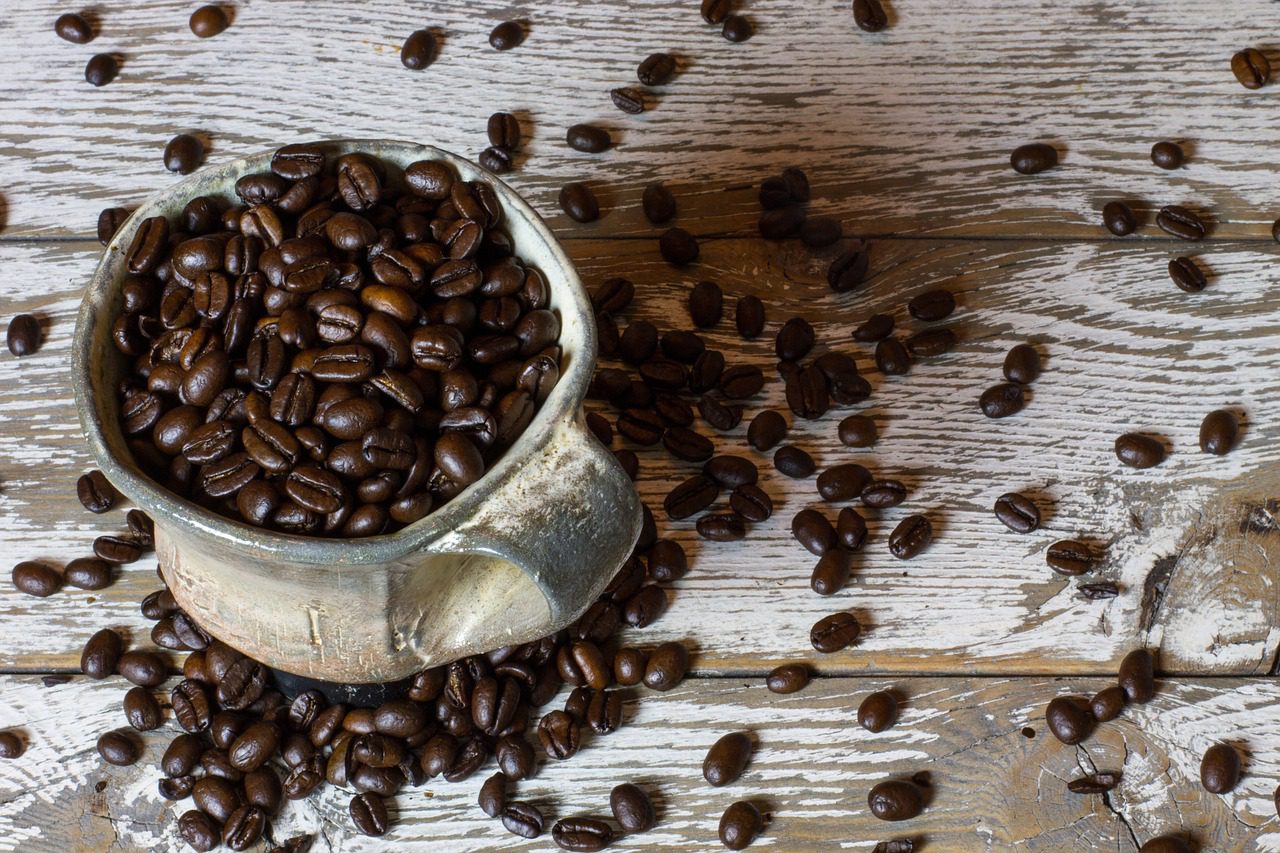
OneHundredCoffee is reader-supported, and some products displayed may earn us an affiliate commission. Details
What Are Espresso Beans?
Espresso beans are the foundation of every exquisite shot of espresso. Derived from Arabica or Robusta coffee plants, these beans undergo a unique roasting process to unlock their distinct flavors and characteristics. Unlike regular coffee beans, espresso beans are roasted for a longer period, resulting in a darker color and a more pronounced taste profile. Espresso beans are known for their rich and intense flavor profiles, which often include notes of chocolate, caramel, nuts, or even fruitiness.

Who is this for?
Puroast Espresso Roast is ideal for coffee lovers who want bold flavor without harsh acidity. With 70% less acid and 7x more antioxidants than traditional coffee, it’s perfect for sensitive stomachs and health-conscious drinkers. This smooth, full-bodied espresso is roasted using a unique method that delivers purity and depth.Their finely ground texture allows for efficient extraction under high pressure in an espresso machine, yielding a concentrated and full-bodied beverage with a velvety crema on top. The key to achieving the perfect shot lies not only in the quality of the bean but also in its freshness. Espresso enthusiasts seek freshly roasted beans to capture optimal flavors that diminish over time.
The Importance Of Roasting For Espresso Beans
Roasting plays a vital role in shaping the flavor profile of espresso beans. It is during this process that the beans transform, changing from their raw, green state to aromatic, rich brown beans ready for brewing. The roasting process not only enhances the taste but also develops the characteristic aroma and complexity that espresso lovers crave. Roasting brings out the natural oils within the beans, which contribute to their body and crema—the luscious foam that tops every well-prepared espresso shot.

Who is this for?
Illy Intenso Espresso is for those who crave a bold, robust coffee experience. Featuring 100% Arabica beans and a dark roast profile, it’s rich, full-bodied, and perfectly balanced. Ideal for espresso machines, moka pots, or French press, this iconic Italian roast delivers intense flavor without bitterness or additives.The duration and temperature of the roast greatly impact the bean’s flavor intensity, acidity, sweetness, and bitterness. A light roast tends to have brighter acidity and fruity notes, while a medium roast brings out nutty flavors with balanced acidity. On the other hand, dark roasts exhibit more pronounced bitterness with smoky undertones. Ultimately, finding the perfect roast level for your preferred espresso taste is crucial.
Flavor Profile Of Espresso Beans
The flavor profile of espresso beans is a complex and rich amalgamation of different taste elements that create a unique sensory experience. With a deep and bold character, espresso beans are known for their intense flavors, often described as robust, full-bodied, and with a hint of bitterness. The prominent notes in espresso beans include dark chocolate, caramel, and roasted nuts, which contribute to the overall richness and depth of the beverage.

Who is this for?
Lavazza Perfetto is ideal for espresso fans who enjoy a rich, dark roast with hints of caramel. Pre-ground for convenience, it’s perfect for moka pots, espresso machines, and drip brewers. This bold Italian coffee delivers full flavor and aroma, making it a great everyday pick for lovers of intense espresso.Additionally, these beans often exhibit undertones of fruitiness or floral hints that provide a delicate balance to the strong flavors. Espresso beans are carefully selected for their ability to withstand high-pressure brewing methods while maintaining their distinctive characteristics. This results in an exquisite cup of coffee that possesses an exceptional balance between acidity, sweetness, and bitterness.
Factors Affecting The Characteristics Of Espresso Beans
The characteristics of espresso beans are influenced by several factors, each playing a crucial role in determining the final flavor profile and quality of the coffee. Firstly, the origin of the beans significantly impacts their characteristics. Different regions around the world produce coffee with distinct flavors, aromas, and acidity levels. Another important factor is the bean variety. Arabica beans are known for their delicate flavors and higher acidity, while Robusta beans have a more robust taste and higher caffeine content.

Who is this for?
Lavazza Espresso Capsules are made for Nespresso OriginalLine users who crave Italian café-style shots at home. Bold and balanced, these single-serve capsules offer convenience without compromising flavor. Perfect for busy espresso lovers, travelers, or anyone seeking quick, mess-free brewing with rich crema and signature Lavazza intensity.The processing method used to prepare the beans is also essential; whether it be natural (dry), washed (wet), or semi-washed, it will affect their flavor and body. Furthermore, environmental factors such as altitude, climate, soil composition, and rainfall also contribute to espresso bean characteristics. Higher altitudes generally yield denser beans with more complex flavors.
Color And Aroma Of Espresso Beans
The Science Behind The Color And Aroma Of Espresso Beans
The color and aroma of espresso beans are not mere coincidences; they are a result of intricate chemical processes that occur during the roasting and brewing stages. The color of beans can vary from light to dark brown, depending on the roasting time and temperature. This color change is due to the Maillard reaction, a complex series of chemical reactions between amino acids and sugars that produce browning compounds.
Similarly, the aroma of espresso beans is a product of volatile compounds released during roasting. These compounds include pyrazines, furans, and aldehydes, which contribute to the distinct fragrance associated with freshly brewed coffee. Additionally, the degree of roasting affects aroma intensity as certain compounds become more prominent at different stages.
Understanding the scientific basis behind these characteristics allows coffee enthusiasts to appreciate the artistry involved in creating a perfectly roasted bean with its unique color and enticing aroma.
Understanding How Roasting Affects The Color And Aroma Of Espresso Beans
Roasting is a crucial step in coffee production that significantly influences the color and aroma of espresso beans. The transformation from green to brown occurs during the roasting process, resulting in various shades that indicate the level of roast. Lighter roasts tend to be lighter brown, while darker roasts are deep and almost black. The color change during roasting is accompanied by a remarkable evolution in aroma.
As the beans heat up, chemical reactions occur, causing volatile compounds within them to break down and release aromatic compounds. Lighter roasted beans often exhibit fruity and floral aromas, while darker roasted beans develop more intense, rich, and smoky notes. The duration and temperature at which beans are roasted play a crucial role in determining their final color and aroma profile.
Roasters carefully monitor these variables to achieve desired flavor profiles that cater to different preferences.
Exploring The Role Of Maillard Reaction In Creating Color And Aroma In Espresso Beans
The Maillard reaction is a complex chemical process that occurs during the roasting of espresso beans and plays a crucial role in developing their color and aroma. This reaction involves the interaction between amino acids and reducing sugars present in the beans, resulting in a cascade of reactions that produce desirable flavors and aromatic compounds. During roasting, as the temperature increases, Maillard reactions intensify.
The browning effect seen on the surface of roasted espresso beans is a direct consequence of this reaction. As amino acids and sugars combine, numerous flavor compounds are formed, including pyrazines, furans, and pyrroles. These compounds contribute to the characteristic nutty, caramel-like notes observed in well-roasted espresso. Furthermore, it is essential to control this reaction carefully during coffee roasting to achieve the desired flavor profiles.
How To Evaluate the Color and Aroma of Your Beans
Appreciating the color and aroma of espresso beans is a sensory experience that enhances the overall enjoyment of your coffee. To fully appreciate these characteristics, follow these simple steps:
1. Observe the color: Examine the beans under good lighting conditions. Quality beans should have a rich, dark color with a glossy sheen. Look for color uniformity, as this indicates even roasting.
2. Inhale deeply: Take a moment to inhale the aroma of freshly ground or whole beans. A high-quality coffee will have a complex aroma that is both enticing and distinct.
Look for notes of chocolate, nuts, fruits, or floral undertones.
3. Consider intensity: Assess whether the aroma is subtle or intense; it can vary depending on the roast level and origin of the beans.






